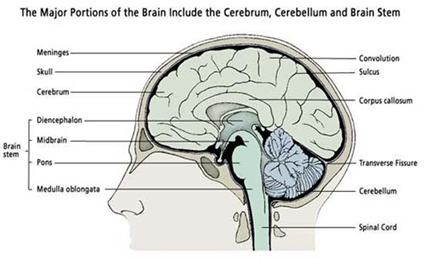Sensory Processing
The OT Bottom Up Approach to Solving Trauma and Emotional Issues
The ‘OT Bottom Up Approach’ indicates the use of the lower or more primitive areas of the brain to address issues in the upper or more advanced areas of the brain.
What is the bottom up approach?
It follows the normal, natural development of the brain and of the body. Your brain consists of many different areas with many different functions. These can be grouped in 3 major areas:
The Cortex
The Limbic Brain (Midbrain)
The Brainstem

The child develops and is called an embryo, then a foetus and at birth the child is called a newborn baby. During the embryonic stage, the brainstem is larger than the other brain areas thus more advanced in development.
The brainstem develops first and is responsible for your primal or primitive reflexes, responses and reactions. It functions on a sensory/motor and survival level.
Reactions which give no time for any thought processes are primal reactions, e.g. when you see sudden danger – the brainstem is responsible for the Fright / Flight reactions (increased heartbeat, dilated pupils, changes in breathing, increased tension in muscles, and more).
These reactions might be caused by real danger or perceived danger. Previous trauma might trigger these reactions when circumstances similar to, or related to, previous trauma are experienced.
For example, a lady called Carla, was involved in a serious motor vehicle accident as a child, she experienced Fright / Flight reactions when she visited the site of the accident years later.
The Limbic Brain is part of the Midbrain. It registers emotions, is responsible for emotional development and emotional regulation.
The Limbic Brain develops Second. Carla had an emotional reaction triggered by the Fight / Fright reaction when she visited the site of the accident. She was in tears and felt emotionally unstable.
The Cortex or Cortical Brain is responsible for thinking, learning and inhibiting reactions. The area of the brain develops 3rd and is the most advance.
However, the many connections with the lower brain areas makes it dependent on the lower areas. Carla’s reaction at the site of the accident came as a surprise for her – she didn’t expect these reactions – the brainstem and midbrain had primitive reactions which happen before you can think about it.
A few minutes after these reactions, Carla ‘pulled herself together’, stopped crying, calmed down and stated that these reactions were unnecessary as the accident happened many years ago.
Carla’s cortical brain related her reactions to the actual situation, the inhibitory qualities of the cortical brain inhibited her primal and emotional reactions and she managed to react in a way appropriate for her and for the situation.
The bottom up approach recognizes that the lower brain areas have many connections with the cortical structures and that trauma, attachment and past experiences may affect the thinking processes.
At times, it can be severe and impact on a person’s functioning in many different areas of life. It might impact on learning, on emotional regulation, concentration and social interactions.
Why is the bottom up approach effective?
It is necessary to address all aspects that are in disarray in the lower areas of the brain. It can include emotions and trauma such as Carla has experienced.
However, it can also include physical developmental delays, e.g. the child who walked late, born early (preemie), didn’t crawl. These children often have sensory motor issues. They might have Sensory Processing Disorder, Coordination issues, Sensory Motor problems or global developmental delays.
These are controlled initially by the brain stem and midbrain. As the child matures, the reactions and control becomes automatic or part of our unconscious reactions.
What happens when sensory motor skills and emotional regulation are automatic?
Once motor reactions and emotional regulation are automatic, the child or adult is free to use the cortical brain to learn, to concentrate on task and to behave appropriately through inhibition of inappropriate reactions.
Jason is a 5-year-old boy with many behavioural issues, including aggressive behaviour, specifically towards his younger sister. He did not concentrate in his class and was observed to wander off or to play aggressively with toys.
The assessment indicated that he had attachment issues as a baby, and sensory processing disorder from baby years (which impacted negatively on attachment – he did not enjoy being held by his mother and resisted breast feeding).
He demonstrated issues with balance and coordination which made it difficult for him to participate in activities that others enjoyed.
Therapy and the CoordiChild program addressed the sensory processing issues, and developed Jason’s balance and coordination. Improved sensory processing improved emotional regulation and touch defensiveness which solved attachment issues.
Once Jason could balance and participate in ball games with effective coordination, his posture and self-confidence improved. Jason’s aggressive behaviour disappeared and emotional maturity was observed in all aspects of his life.
With thanks and credit to:
Pat Ogden for her work on sensori-motor psychotherapy.
Bruce Perry, Bessel Van der Kolk and Patricia Crittenden for their original work on Developmental Trauma, Attachment and the Neuro Sequential Model of Therapeutics.